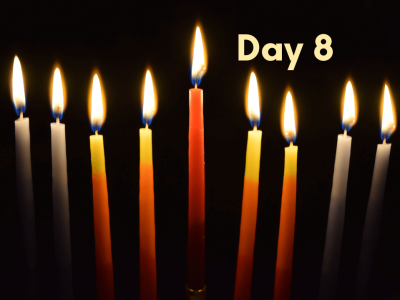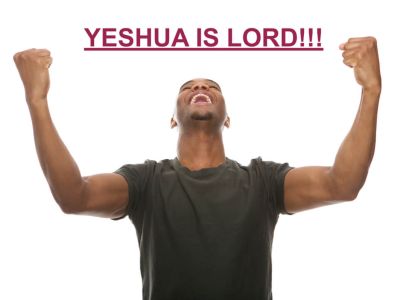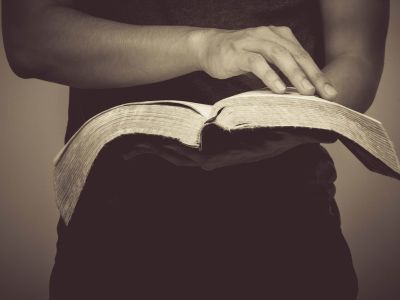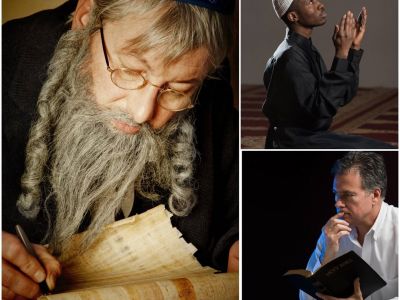The Sacrificial Offerings: Then and Now
The Sacrificial Offerings: Then and Now
The Creator gave instructions on how to build the tabernacle and what the garments and office of the priests look like. Then we spent a considerable amount of time revealing the spiritual connections for our temples today. Now, as we move through the first few chapters of Leviticus, we’ll see the conversation changing from construction and priestly garb to the offerings that were to be offered for specific purposes. In other words, once the tabernacle was built and the priests ready for service, they had to be instructed on the proper protocol for approaching their God. And that’s what this week’s portion is all about.

Because knowledge without application only feeds the ego and the will to receive, and the entire purpose of our existence is to give back to the Creator in all that we do, we are going to focus on the spiritual application of each offering as it relates to us today.
THE BURNT OFFERING
The olah offering was one of the primary offerings made in temple times. The word olah means “to go up in smoke” and is where we get the word holocaust from. This offering was to be a male from the herd that was without blemish, meaning it had to be the best. The offerer would place his hands on its head, transferring his sins to the sacrifice and then personally kill the animal before Yahweh and the priests.
The spiritual message behind this offering is striking. First of all, the offering was to be the best from the herd and was to be wholly consumed by fire before the Lord. In the same way, Yeshua is the whole burnt offering for today. In order for one to be forgiven of his sin, he has to place both hands upon Messiah in utter dependence and humility, confessing his sins and making the transfer complete. In doing so, he is actually killing the Messiah, forcing Him to offer Himself up to His Father to make the sacrifice whole and complete. The entire sacrifice must be consumed. In this way, we realize that it wasn’t the Jews who killed Yeshua, but every single man that trusts in His forgiving power and grace as he transfers his personal sin to Him.
Interestingly enough, the only part of the offering that was not burned was the skin. What a beautiful picture the Father is showing us! Yeshua was not offering up His human flesh, as if that was of some importance. He was offering up everything that was UNDER that flesh. It was who He was that made all the difference in the world. In the same way, Yahweh is not concerned about your outward appearance. What He wants is everything underneath it!
THE GRAIN OFFERING
The next offering explained in chapter 2 is the mincha (meen-kah), or grain offering. This offering was offered out of pure love for Yahweh in thanksgiving for all His provision. It had to be from the best of the grain and could never have leaven in it when offered. The priest would take the offering, remove a memorial portion and burn it, and the remainder would go to the priest and his family to eat. No part was eaten by the offerer. It was always offered with salt and the memorial portion was offered with salt, oil, and frankincense. The mincha offering is one of the very first offerings mentioned in the bible as this was the offering made by Cain and Abel.
In the time of the ancient Israelites, those who were truly connected to their God and had great love for Him would bring an offering to the priests whenever they had an overflow of thanksgiving in their hearts. Today, this might mean that when the Father blesses someone with a raise, a breakthrough they’ve been praying for, or some other blessing, they would say “Thank You” by offering a mincha offering to the Lord through the modern day priests, those who are laboring full-time before the altar on behalf of Kingdom people.
Metaphorically, the mincha offering can also be the people themselves. Malachi 1:11 says, “For from the rising of the sun, even to its going down, My name shall be great among the Gentiles. In every place incense shall be offered to My name, and a pure offering.” The word offering there is the Hebrew word mincha. It tells us that our prayers (incense) can be a mincha offering as well, giving Him thanksgiving as we bring Him our very best. This is also why we are to be pure and holy before Him. We are commanded to be our very best and nothing less. This means that we should strive to be holy as He is holy so that we are bringing our very best, pure offering before Him.
THE PEACE OFFERING
As we move into Leviticus chapter 3, we get detailed instructions for the peace, or shelem, offering. Shelem comes from the word shalom, the most common word for peace. The shelem offering is also called the fellowship offering. In this offering, the offerer brings a voluntary sacrifice before the priests, lays his hands on the head and kills it himself. The fat and entrails of the animal are placed on the altar to be burned and the blood poured out on the altar. But instead of the animal being fully burned or going to the priests, the offerer was allowed to eat the offering after it was dedicated to Yahweh, thus creating the idea of the “fellowship” offering. It is also interesting to note that in ancient pagan cultures, the liver was used for fortune telling. Burning the liver demonstrated to His people that they were to rely solely on Him for their future rather than on pagan gods.
The word shelem means “complete, finished.” Peace is attained when one first gives all of himself to the Creator through the blood of the Lamb (the olah whole burnt offering), then offers an offering of praise and thanksgiving (the mincha grain offering), and then maintains his relationship with the Creator through constant fellowship (peace offering). When we rely fully on the blood of Yeshua for ultimate mercy and give Him thanks for all things in our lives, regardless of whether they appear good or bad from our perspective, we can truly fellowship with Him. Understanding the above brings peace. A man will never be complete until he finds real peace and fellowship with his Creator.
Peace comes from a thankful, cheerful heart. “So let each one give as he purposes in his heart, not grudgingly or of necessity; for God loves a cheerful giver” (2 Cor. 9:7). Thankfulness and giving with a cheerful heart is the key to fellowship. Those who give to the Lord through the building up of His kingdom through like-minded ministries but do not give out of thankfulness are throwing their offering into the wind. He only accepts those who are grateful that they get to be part of building His kingdom to begin with.
THE SIN OFFERING
The sin offering, or chattath (khat-tawth) offering, was an offering that was brought before the LORD due to unintentional sin. If anyone in Israel committed a sin and they either did not know it was a sin or they unintentionally transgressed the commandment, this was the offering to bring. The animal they brought depended on the role given in their relation to the kingdom. If it was the high priest that sinned or the entire congregation, the high priest would be required to offer the most expensive sacrifice, the young bull. (James says that teachers are judged more strictly. This is an example of that.) A male kid was offered for a ruler in Israel, and a female kid or lamb for the common person. In all instances, the person that sinned transferred their sins by laying their hands on the head of the sacrifice and killing it themselves before the priest. The priest would dip his finger in the blood and sprinkle it seven times before the veil in the temple. Then he put some of the blood on the horns of the altar of incense which was in front of the curtain in the Holy Place and poured the rest out at the base of the altar. From there, the fat was burned on the altar but the rest of the animal was taken outside the camp and burned completely with fire. It was a whole burnt offering in this respect except, in this case, the entire animal was burned, including the hide.
Whereas the fellowship offerings were to be eaten by the offerer, the sin offering was not. The priest could partake in the sacrifice of someone else’s offering but not his own. This made a statement that in no way was the priest allowed to profit from his own sin. Unfortunately, when someone sins today it costs them very little. Most people just say “I’m sorry” and move on, leaving God defrauded. But in bible times, when a person accidentally sinned against God, they could not just apologize with their mouth and move on. They were required to sacrifice an animal for each sin that was committed. Can you imagine if people today had to pay money every time they sinned before God? Perhaps a sin offering that actually costs us something would force us to think before we sin since each sin would drastically affect our bank accounts.
THE GUILT OFFERING
The asham offerings were offerings that were made for unintentional sins against a fellow man that resulted in defrauding that person from something that was owed them. This went right along with the sin offering. The sin offering was given to make things right with Yahweh alone. The guilt offering was to now make things right with both Yahweh and the one who was sinned against. Sins against God were against Him alone. Sins against man were both against the Creator and the one sinned against, resulting in the requirement to repent to both God and man. The sinner would bring a ram before the priest along with the full restitution payment plus a twenty percent fine. This would make the person sinned against whole and would cause him to be forgiven by Yahweh, as well.
This same principle can easily be kept today. Again, when we are looking to understand the Word of God, we need to look for the Creator’s original intent. In this instance, it’s clear that His original motive is to make the one defrauded whole again. For example, today, if someone borrows a power tool from a neighbor and that power tool gets damaged, the one who unintentionally broke it would be required to replace it with like kind and add 20% to it for the trouble. We are to love our neighbor as ourselves. And in this case, we would certainly purchase a new power tool for ourselves, so we should do the same for our brother.
One interesting place where the asham offering is found is in Isaiah 53:10:
“Yet it pleased Yahweh to bruise Him; He has put Him to grief. When you make His soul an offering (asham) for sin.” (parenthetical insertion mine)
This chapter goes into great detail about the individual who takes on the sins of all mankind. As New Covenant believers, we know that this person is Yeshua, the Son of the living God. Stating that He is the asham offering sheds light on the fact that He is becoming our guilt offering, offering Himself up and paying the entire price plus the twenty percent required by the Law. The incredibly strange thing is that instead of us paying the price ourselves for the sins we committed, He pays the price for us and then turns around and gives the price that was paid back to us! He gives Himself as the price that was required (perfect blood) and then turns right around and allows us to receive Him. And He doesn’t just give us Himself, the very price that was paid, but He goes above and beyond by giving us the Holy Spirit, that extra “twenty percent” to make us perfectly whole, complete, and back to the spiritual condition we had in the garden where we had full fellowship with Him.
The word for offering in Hebrew is corban, which literally means “a gift to God” or “that which comes near to God.” The entire sacrificial system was designed to bring His people that had fallen from grace back to Him. His original intent was to create fellowship and relationship through this system. Some view the sacrificial system as barbaric and “old,” but it was nothing of the sort. It was a beautiful way for man to be reminded of the seriousness and consequences of his sin as well as be a part of the process of making it right.
As we study His holy Word and look for His original intent that transcends all time, we can see the incredible value that every word has in the life of the believer. Let us take from this section that we ought not just repent with our mouths, but fully repent in action, seeking to make things right with both Yahweh and our fellow man.
Shalom,
Jim Staley












